 |
 |
 |
| |
Infrequent hepatitis C genotypes/subtypes in patients
treated with DAA-based regimens: successes and failures
|
| |
| |
EASL 2022 June 22-26 London
D. MURPHY1,#, I. RUIZ2,#, J-P VILLENEUVE2, C. VINCENT2, J. HERCUN2, D. FENYVES2, D. MARLEAU2, H. CASTEL2, J.BISSONNETTE2, G. HUARD2, C. FOURNIER2,
J-M. GIARD2, D. CORSILLI3, Z. HASSOUN2, P. WILLEMS2, I. SOTO2, M. BILODEAU2,*, B. WILLEMS2,*.
#Authors share co-first authorship; *Authors share co-senior authorship.
1. Institut national de sante publique du Quebec, Laboratoire de sante publique du Quebec, Sainte-Anne-de-Bellevue, Quebec, Canada. 2. Liver Unit, Centre hospitalier de l'Universite de Montreal (CHUM), Canada. 3. Intensive Care Unit, Centre hospitalier de l'Universite de Montreal (CHUM), Canada
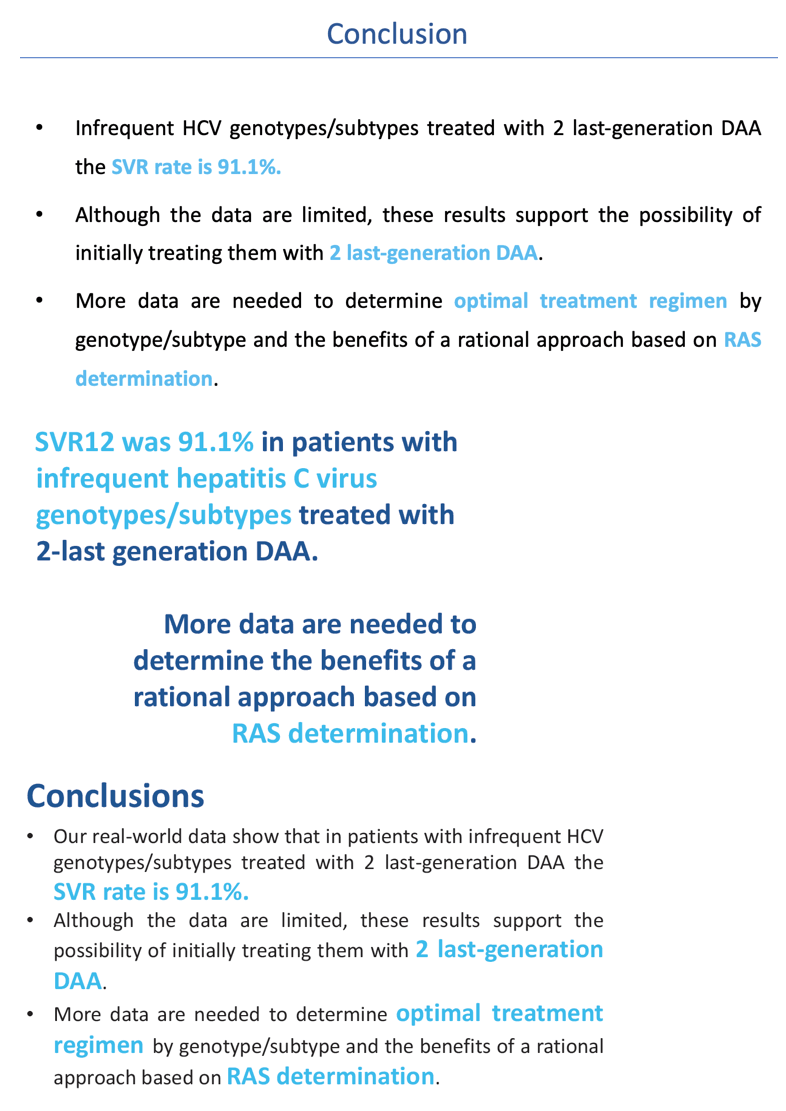
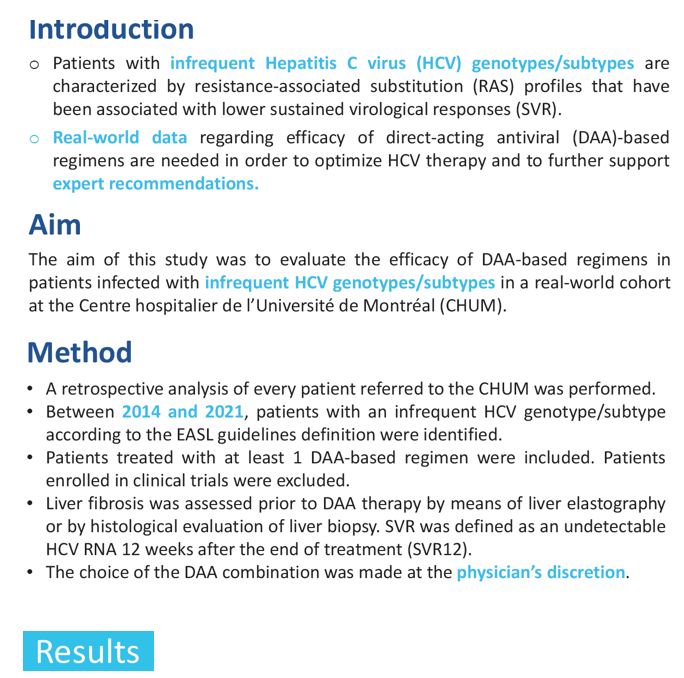
Among the 801 patients treated with at least 1 DAA-based regimen, 108 (13.5%) had an infrequent genotype/subtype. Median age was 64 (17 - 96), 54 (50.9%) were of male gender, 54 (50.9%) had F3-F4 fibrosis.
Figure 1 shows the overall successes and failures by generation of DAA. The overall SVR12 rate with at least one DAA-based regimen was 87.0% (94/108). In a subgroup analysis, the overall SVR12 rate of patients treated with 2 last-generation DAA was 91.1% (51/56).
Figure 2 shows the DAA-based regimens and outcome by line of treatment for those who failed the first line regimens. Twelve patients received additional DAA-based regimens. Before retreatment, 75.0% had F3-F4 fibrosis. SVR12 was 91.7% (11/12). One cirrhotic genotype 1k patient failed 4 DAA-based regimens (SOF/SIM; SOF/LDV 24/48 weeks; SOF/LDV/RBV).
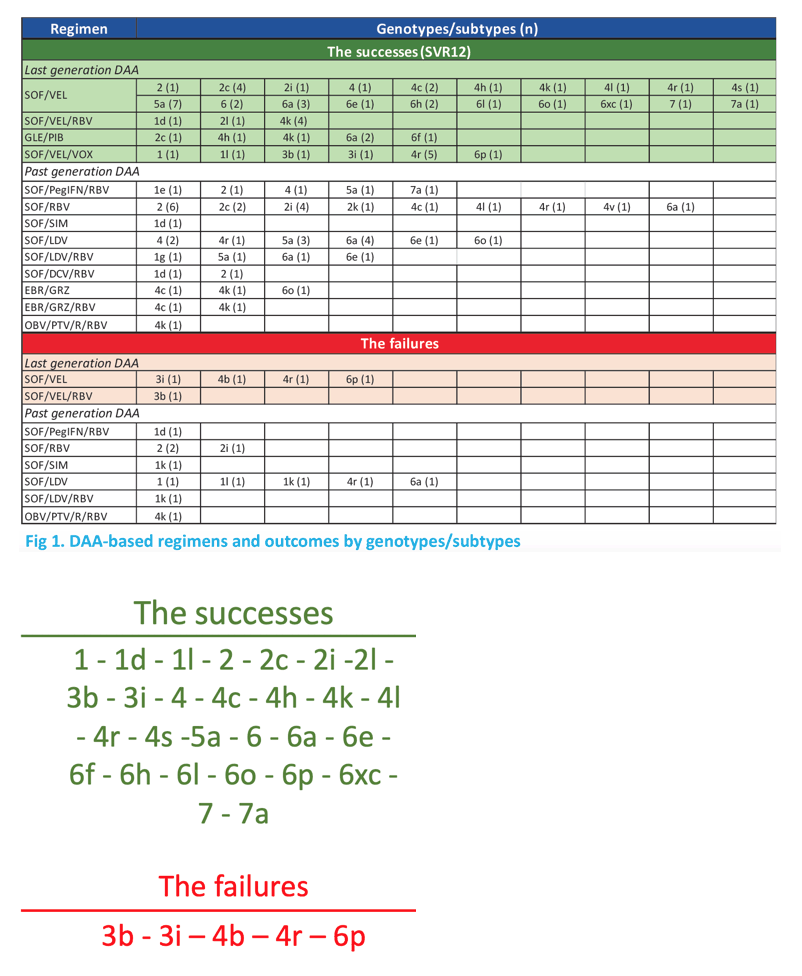
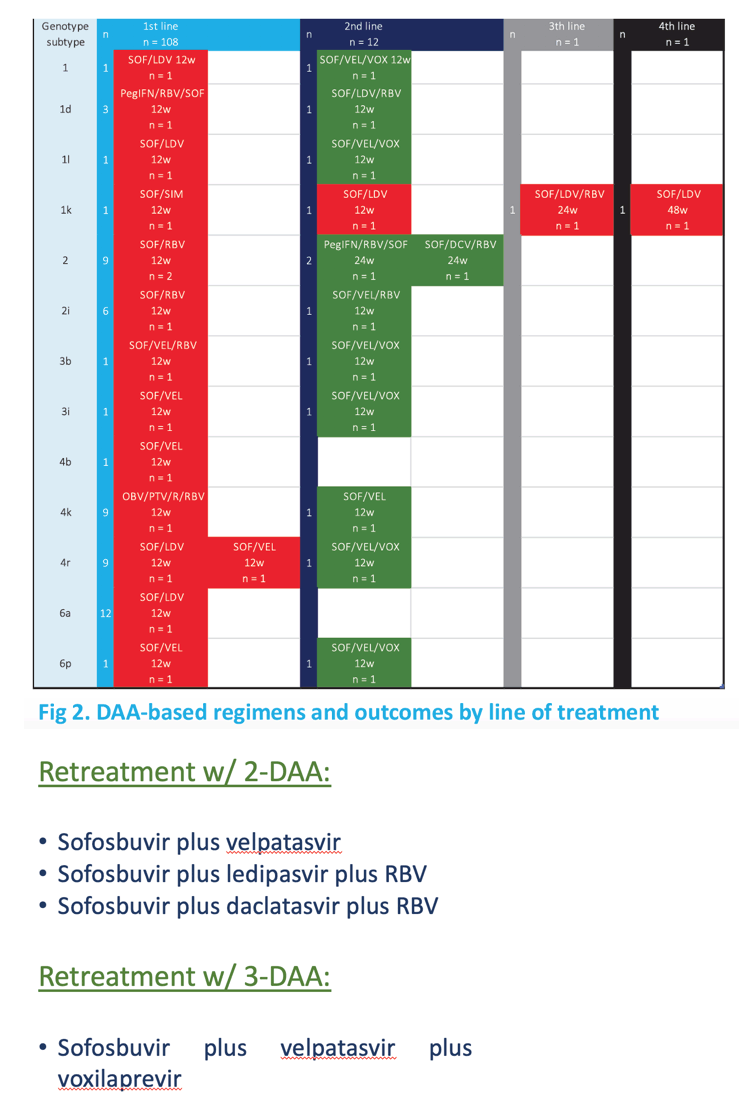
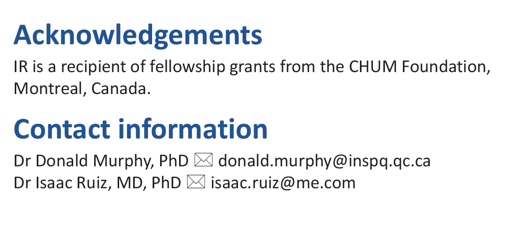
|
| |
|
 |
 |
|
|